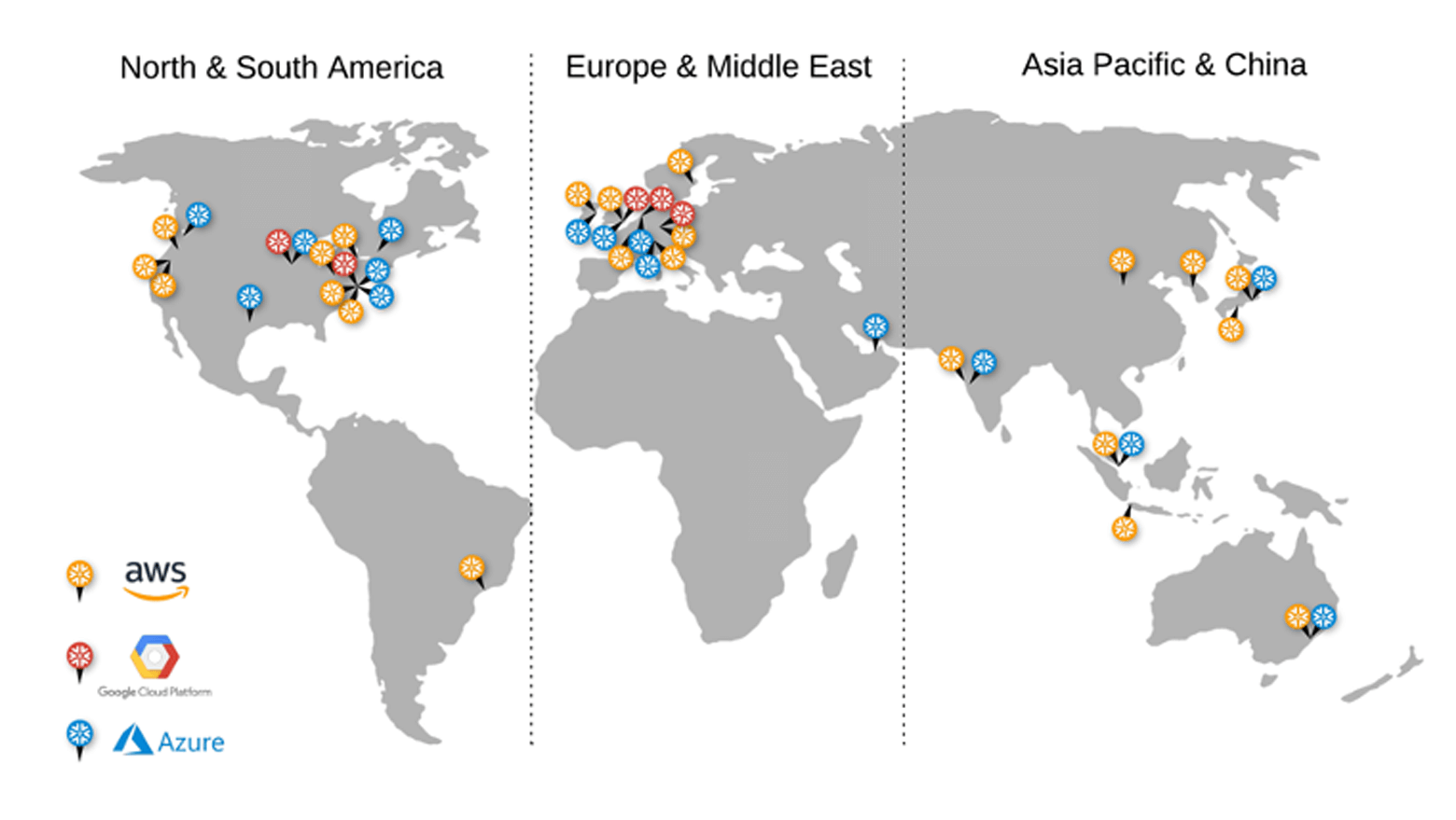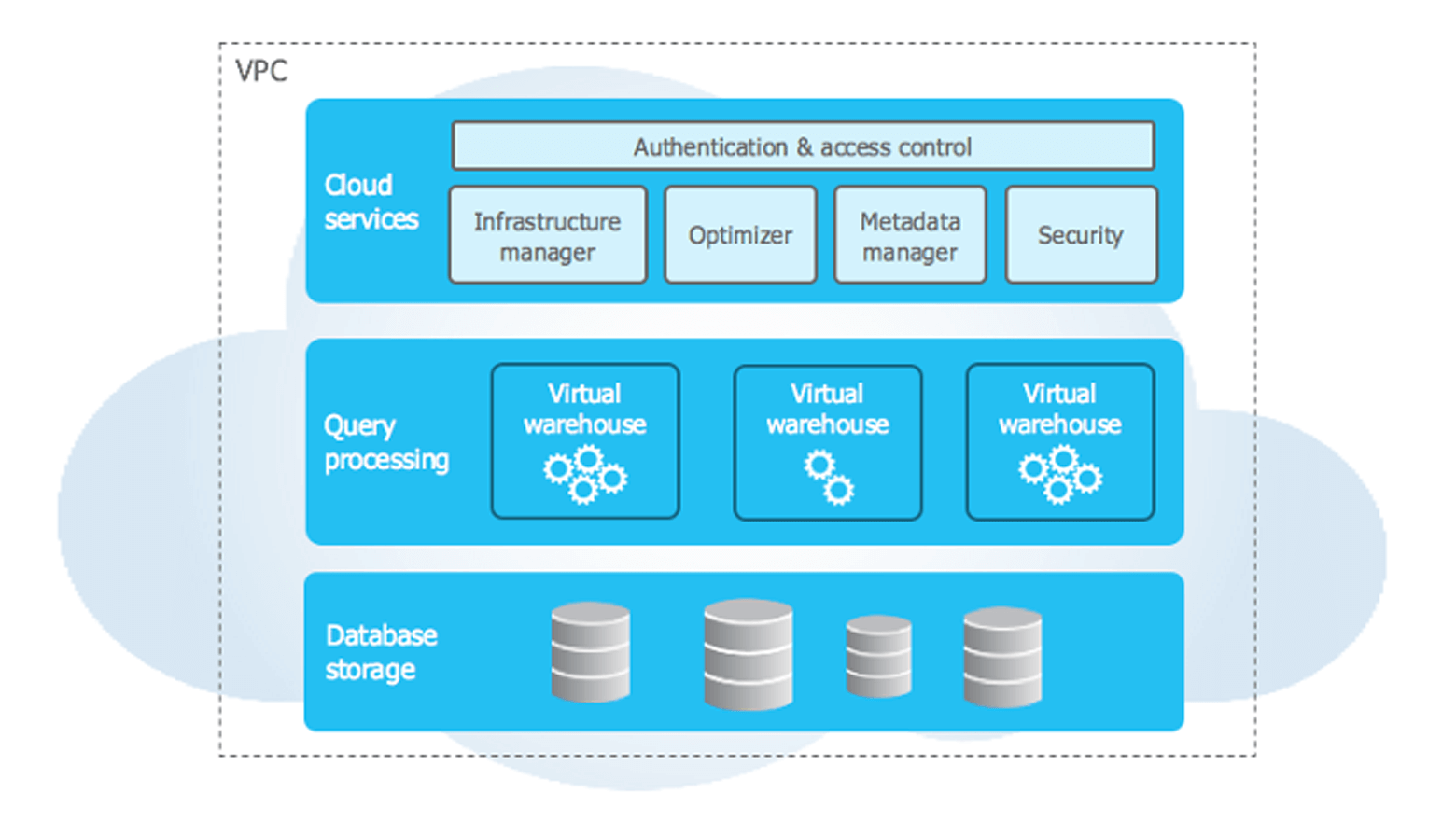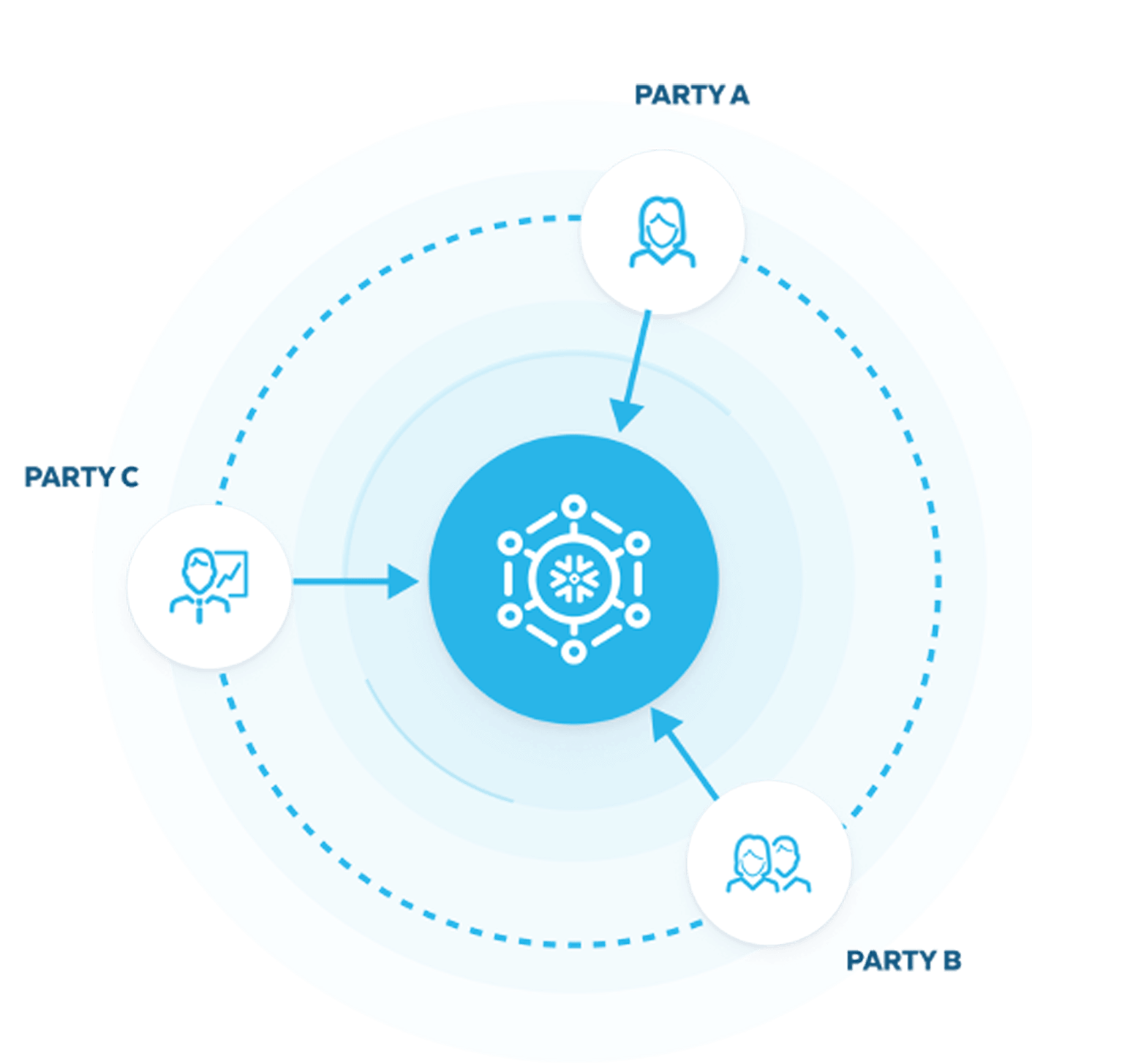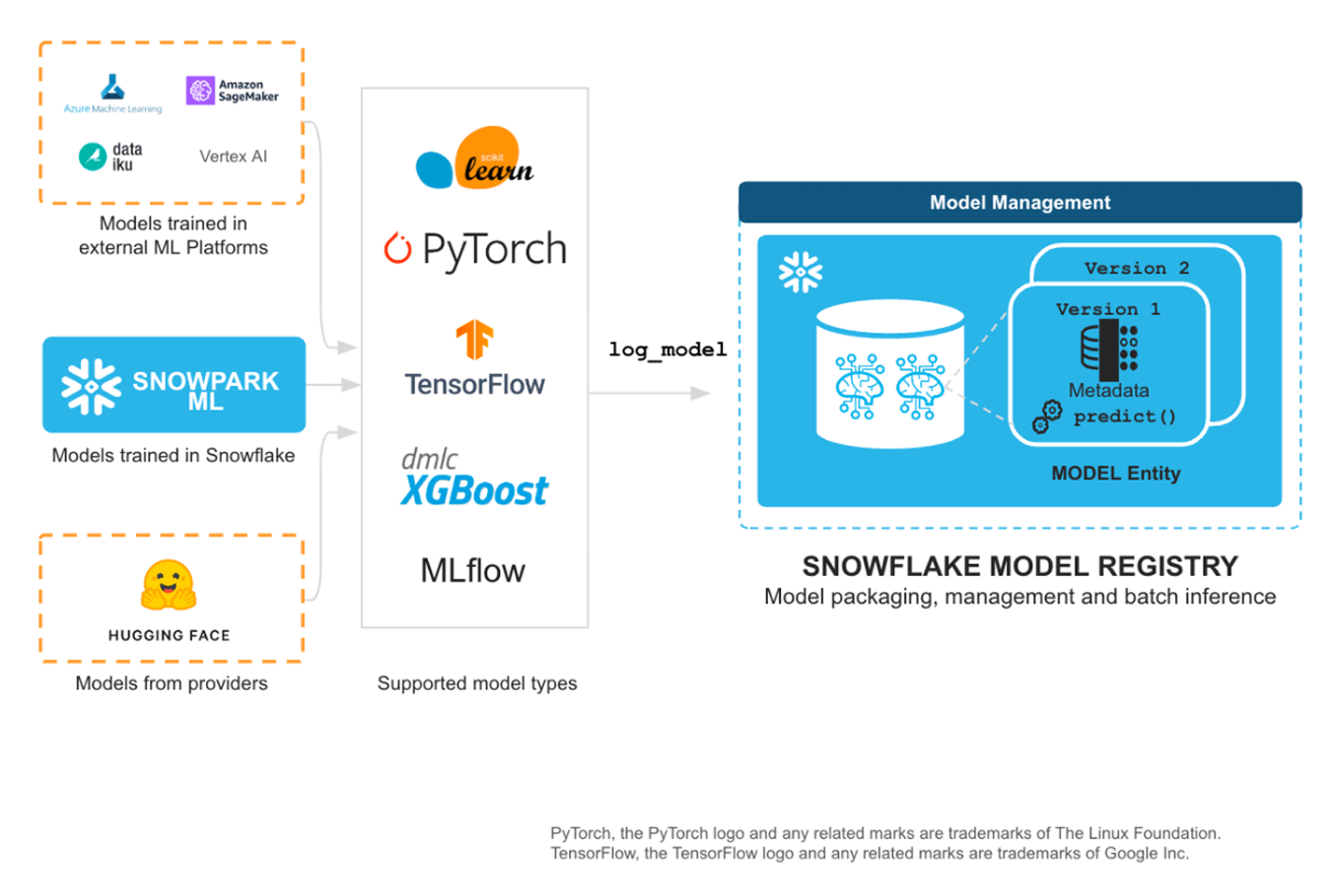Snowflake rapidly gains attention in the Cloud data platform industry. Compared to traditional data warehouses, Snowflake offers significant advantages in scalability, performance, and ease of management, and the technology is selected by leading companies.
This article provides an overview of the key reasons behind Snowflake’s growing popularity and its key technical features.
1. What is Snowflake?
Snowflake is a cloud-native data platform that integrates Data Warehouse (DWH), Data Lake, and Data Engineering functionalities. Snowflake operates on Amazon Web Services (AWS), Microsoft Azure, Google Cloud Platform (GCP), offering flexible scalability and high performance.

Source : https://docs.snowflake.com/ja/user-guide/intro-regions
Snowflake was founded in 2012; it went public on the New York Stock Exchange (NYSE) in 2020. They achieved the largest IPO by a cloud company at the time. Since then, it has rapidly gained global adoption, and many companies are now using it as their data analytics platform.
2. Why Snowflake?
① Cloud-native Architecture
Snowflake is a DWH designed specifically for clouds, unlike traditional on-premises ones. This means there is no need for infrastructure management, and resources can be easily scaled up or down.
② Separation of Compute and Storage
Snowflake is known for separating compute instance and data storage, which offers several key benefits as follows:
- Flexible Scalability : Increase compute resources when needed and scale them down when no longer required.
- Cost Optimization : Pay only for the storage and compute resources used, reducing unnecessary cost.
- Multi Cluster Architecture : Multiple users can run queries without resource contention.

Source : https://docs.snowflake.com/ja/user-guide/intro-key-concepts
③ Enhanced Security and Governance
Snowflake encrypts data by default with robust features for access control and audit logs. As the other advantage, its data-sharing enables secure data to be shared between different organizations and teams.

Source : https://www.snowflake.com/ja/data-cloud/workloads/collaboration/?utm_cta=website-homepage-workload-card-ai-m
④ Query Performance Optimization
Snowflake includes build-in features such as automatic data compression, index optimization, and caching, enables fast query execution. Especially, its resume feature (pause and resume) allows compute resources to be used efficiently as needed.
⑤ Easy Integration and Sharing
Snowflake allows seamless integration of various data sources (CSV, JSON, Parquet) and smooth connectivity with external BI tools (Tableau, Power BI, Looker).
Additionally, its Data Marketplace enables businesses to purchase and utilize third-party data.
3. Snowflake Technical Key Point
Snowflake has 3 different types of architectures such as storage, compute, and cloud services.
① Storage Layer
- Data can be stored in cloud storage(AWS S3, Azure Blob Storage, GCP Storage)
- Automatic data compression and optimization ensure efficient management.
- The Time Travel feature allows restoring data to a specific point in the past.
② Compute Layer (Virtual Warehouse)
- Compute resources can be isolated for each workload.
- Instant scaling up/down prevents resources waste.
- Query cashing enables fast retrieval of frequently accessed data.
③ Cloud Service Layer
- Handles authentication, access control, metadata management, and query optimization.
- Enables instant data sharing with other accounts through the data sharing feature.
4. Key Use Care of Snowflake
① Modernizing Data Warehouses
Migrate existing on-premises DWHs (Oracle, Teradata, IBM) to the cloud in order to achieve scalability and cost optimization.
② Integrating Data Lake
Integrate a Data Lake with Snowflake for unified management of both structured and unstructured data.
③ Data Analytics and BI
Perform real-time data analysis by integrating with tools such as Tableau and Power BI.
④ AI/ML Data Platform
Aggregate training data for machine learning models on Snowflake and integrate with AI tools such as Databricks, AWS SageMaker, and Google Vertex AI.

Source : https://quickstarts.snowflake.com/guide/intro_to_machine_learning_with_snowpark_ml_for_python/index.html?index=..%2F..index&utm_cta=website-homepage-workload-card-ai-ml&_ga=2.20454513.818002874.1739322155-770990898.1686809779#0
5. Snowflake Pricing Model
Snowflake’s pricing is divided into 2 main components, storage and compute costs:
- Storage costs : Charges are based on the amount of cloud storage used.
- Compute costs : Charges are based on the size and usage time of virtual warehouses (vWH).
It operates on a pay-as-you-go basis, where you are charged only for the services you use, ensuring maximum cost efficiency.
6. Summary : Why is Snowflake chosen?
Snowflake has become an increasingly popular platform worldwide, recognized as the ideal solution for leveraging data in the cloud area. For companies considering modernizing their data warehouses or establishing a foundation for data analytics, it presents a highly valuable option.
| Main Features |
Benefit |
| Cloud-native |
Excellent scalability without infrastructure management |
| Separation of Compute and Storage |
Cost optimization, performance improvement |
| Security and Data sharing capabilities |
Safe management and sharing of data |
| Query Performance Optimization |
Enables fast data processing |
| Support for various data formats |
Easy integration of JSON, CSV, Parquet |
| Easy integration with external tool |
Integration with Tableau, Power BI, AI tools |
Here are the websites to which referred to for the article. For more details, please go to see them:








